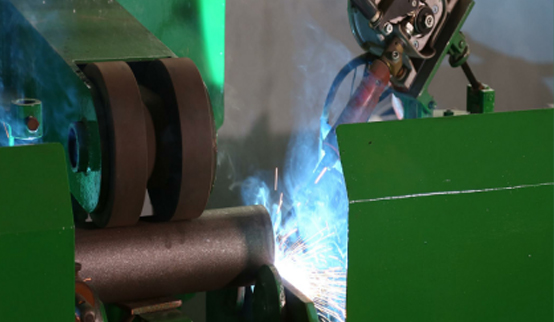 Afrikaans
Afrikaans  Albanian
Albanian  Amharic
Amharic  Arabic
Arabic  Armenian
Armenian  Azerbaijani
Azerbaijani  Basque
Basque  Belarusian
Belarusian  Bengali
Bengali  Bosnian
Bosnian  Bulgarian
Bulgarian  Catalan
Catalan  Cebuano
Cebuano  Corsican
Corsican  Croatian
Croatian  Czech
Czech  Danish
Danish  Dutch
Dutch  English
English  Esperanto
Esperanto  Estonian
Estonian  Finnish
Finnish  French
French  Frisian
Frisian  Galician
Galician  Georgian
Georgian  German
German  Greek
Greek  Gujarati
Gujarati  Haitian Creole
Haitian Creole  hausa
hausa  hawaiian
hawaiian  Hebrew
Hebrew  Hindi
Hindi  Miao
Miao  Hungarian
Hungarian  Icelandic
Icelandic  igbo
igbo  Indonesian
Indonesian  irish
irish  Italian
Italian  Japanese
Japanese  Javanese
Javanese  Kannada
Kannada  kazakh
kazakh  Khmer
Khmer  Rwandese
Rwandese  Korean
Korean  Kurdish
Kurdish  Kyrgyz
Kyrgyz  Lao
Lao  Latin
Latin  Latvian
Latvian  Lithuanian
Lithuanian  Luxembourgish
Luxembourgish  Macedonian
Macedonian  Malgashi
Malgashi  Malay
Malay  Malayalam
Malayalam  Maltese
Maltese  Maori
Maori  Marathi
Marathi  Mongolian
Mongolian  Myanmar
Myanmar  Nepali
Nepali  Norwegian
Norwegian  Norwegian
Norwegian  Occitan
Occitan  Pashto
Pashto  Persian
Persian  Polish
Polish  Portuguese
Portuguese  Punjabi
Punjabi  Romanian
Romanian  Russian
Russian  Samoan
Samoan  Scottish Gaelic
Scottish Gaelic  Serbian
Serbian  Sesotho
Sesotho  Shona
Shona  Sindhi
Sindhi  Sinhala
Sinhala  Slovak
Slovak  Slovenian
Slovenian  Somali
Somali  Spanish
Spanish  Sundanese
Sundanese  Swahili
Swahili  Swedish
Swedish  Tagalog
Tagalog  Tajik
Tajik  Tamil
Tamil  Tatar
Tatar  Telugu
Telugu  Thai
Thai  Turkish
Turkish  Turkmen
Turkmen  Ukrainian
Ukrainian  Urdu
Urdu  Uighur
Uighur  Uzbek
Uzbek  Vietnamese
Vietnamese  Welsh
Welsh  Bantu
Bantu  Yiddish
Yiddish  Yoruba
Yoruba  Zulu
Zulu belt conveyor troughing idlers
Understanding Belt Conveyor Troughing Idlers
Belt conveyors are crucial components in various industries, including mining, agriculture, and material handling. They are designed to transport bulk materials efficiently and steadily over distances. One of the essential elements of a belt conveyor system is the idlers. Among these, troughing idlers play a pivotal role in ensuring that the belt operates smoothly and effectively.
What are Troughing Idlers?
Troughing idlers are the rollers that support the conveyor belt while maintaining its shape and ensuring the material remains contained during transit. They are typically arranged in a trough formation, which allows the edges of the belt to rise slightly, creating sidewalls that prevent materials from spilling over. This design is particularly beneficial for handling bulk materials, which can be loose or unevenly sized.
Types of Troughing Idlers
Troughing idlers come in various configurations depending on the application and the type of materials being transported. The most common arrangements are the 20-degree, 30-degree, and 45-degree troughing idlers. The angle of the idler affects the belt’s capacity and operational efficiency. For example, a 20-degree troughing idler is suitable for lighter materials, whereas a 45-degree configuration is better for heavier, bulkier loads.
- Standard Troughing Idlers These are the most widely used and are designed for general-purpose applications. - Impact Idlers Located at transfer points, they help absorb the shock load of material falling onto the belt, thereby protecting the belt and other components. - Return Idlers Positioned underneath the conveyor, these idlers support the belt’s return section and ensure it maintains proper alignment.
Benefits of Using Troughing Idlers
1. Improved Material Control The troughing design allows for better containment of materials, reducing losses from spillage. This not only minimizes waste but also enhances safety by keeping the surrounding area clean.
belt conveyor troughing idlers

3. Reduced Wear and Tear By supporting the belt adequately and distributing the load evenly, troughing idlers help reduce wear and tear on the belt itself, ultimately extending its lifespan.
4. Increased Efficiency Properly aligned and functioning troughing idlers ensure smooth operation of the conveyor system, leading to increased efficiency and reduced operational costs.
5. Versatility Troughing idlers can be utilized in various environments and conditions, making them suitable for diverse materials, from grains to heavy ores.
Considerations for Selection and Maintenance
When selecting troughing idlers, it is essential to consider factors such as the type of material being transported, the environment (dusty, wet, etc.), and the overall weight of the load. Regular maintenance is also crucial, as worn or damaged idlers can lead to misalignment of the belt, increased friction, and potential system failures.
Routine inspections should focus on checking for signs of wear, ensuring that the idlers rotate freely, and verifying that they are properly aligned with the conveyor system. By maintaining troughing idlers in optimal condition, operators can ensure the consistent and efficient performance of their belt conveyor systems.
Conclusion
Troughing idlers are vital components of belt conveyor systems, significantly contributing to material handling efficiency and safety. By understanding their function, types, and benefits, businesses can make informed decisions about their conveyor setups, leading to enhanced productivity and reduced operational costs. Proper selection and maintenance of troughing idlers are fundamental for optimizing the performance of any conveyor system in today’s fast-paced industrial environments.
-
Revolutionizing Conveyor Reliability with Advanced Rubber Lagging PulleysNewsJul.22,2025
-
Powering Precision and Durability with Expert Manufacturers of Conveyor ComponentsNewsJul.22,2025
-
Optimizing Conveyor Systems with Advanced Conveyor AccessoriesNewsJul.22,2025
-
Maximize Conveyor Efficiency with Quality Conveyor Idler PulleysNewsJul.22,2025
-
Future-Proof Your Conveyor System with High-Performance Polyurethane RollerNewsJul.22,2025
-
Driving Efficiency Forward with Quality Idlers and RollersNewsJul.22,2025





























